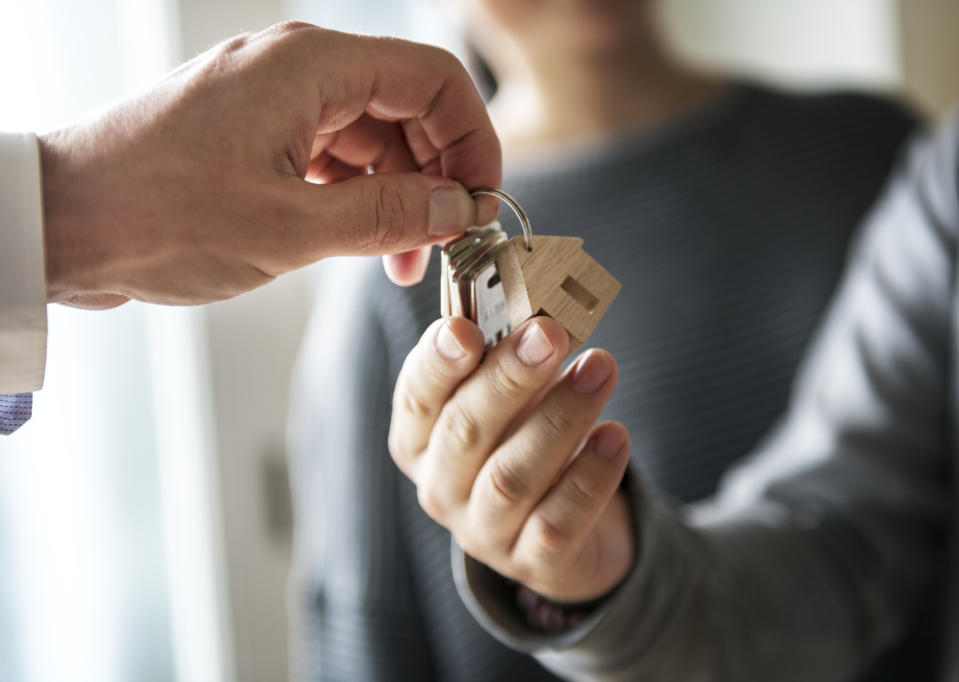Is shared ownership property worth it?

Shared ownership is for some first-time buyers the only way they can step onto the property ladder.
Now, the government is consulting on shared ownership with a view to improving the schemes on offer across the country, and widening access to them.
Among its proposals are allowing buyers to staircase by 1% a time and giving 20% discounts to local first-time buyers.
But shared ownership is not always the best option for everyone and schemes do come with various pitfalls.
“Initiatives that stimulates the housing market and get people on the property ladder are generally a good thing,” Tom Greenacre, regional director at the online estate agent Purplebricks, told Yahoo Finance UK.
“Shared ownership can be a great option for young couples with a relatively low household income–giving them a foothold and allowing them to begin their journey of home ownership.
READ MORE: UK house prices ground to halt
“That said, it’s crucial to make sure you get good advice and a solid understanding of how a particular scheme works, as terms and conditions can vary significantly.”
Lowering barriers to entry
In essence, shared ownership schemes work like this: You buy a portion of a property and pay rent on the part you do not own to the landlord, which is often a housing association.
This lowers the barrier of entry to first time buyers because you only need to afford a mortgage on a portion of a property, not the whole thing.
Usually, shared ownership schemes offer between 25% and 75% of a property up for purchase.
To qualify you must have an income below a certain threshold as the schemes are intended to support those who cannot afford to buy in the normal market.
Where house prices are particularly high, such as London and the south-east, this is a helpful way of opening up the property market to first-time buyers.
However, new build shared ownership homes tend to be overpriced, which increases the risk of sliding into negative equity unless you plan on staying put for a long time.

Beware of hidden drawbacks
Another drawback of shared ownership property, which is sold on a leasehold basis, is that you are responsible for all of the maintenance costs of the home.
Moreover, you face charges as a leaseholder, such as service charge and ground rent, which will likely grow each year and, in addition to the rent, ramp up your monthly costs.
When it comes to staircasing, which means buying a larger portion when you are able to afford it, there are lots of expensive fees. These include, but are not limited to, a valuation fee, mortgage fees, and solicitors’ fees, not to mention stamp duty if you rise into the tax thresholds.
READ MORE: UK property prices: 'The single biggest issue is not Brexit'
Leasehold terms for shared ownership also tend to be quite restrictive, such as no sub-letting and bans on pets.
Finally, when it comes to selling, the process is more complicated than usual.
You will have to give the other owner several weeks to sell the property at a valuation they agree to before you can take it onto the open market.
Under the affordable housing rules, they are obliged to find a buyer who meets strict criteria, primarily that they fall beneath an income cap to qualify. This narrows your potential resale market for the initial period that the property is listed for sale.
The government’s proposals to rejig the shared ownership market includes establishing a single, national model for providers of such schemes to follow.
It would help to remove some of the complexity between schemes and standardise the approach, in turn allowing mortgage lenders greater scope to provide suitable products.
But the HomeOwners Alliance (HOA) cautioned that this would not deal with the broader issues around leaseholding, and the lack of control tenants have.
READ MORE: Buyers rush to move before ‘summer surge’ in property sales
The HOA, which has a guide to shared ownership, also noted that allowing people to purchase 1% chunks would only work if the fees associated with staircasing are also addressed.
Paula Higgins, CEO of the HOA, says shared ownership is a good way for people to get a leg up onto the property ladder but that the government is "tinkering at the edges" with its proposals.
"They need to assess the unfair aspects of the scheme—such as the owner owns a share of the property yet is liable for 100% of maintenance and repair costs—as well as the barriers such as the difficulty in selling on," she said.
